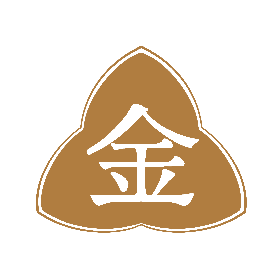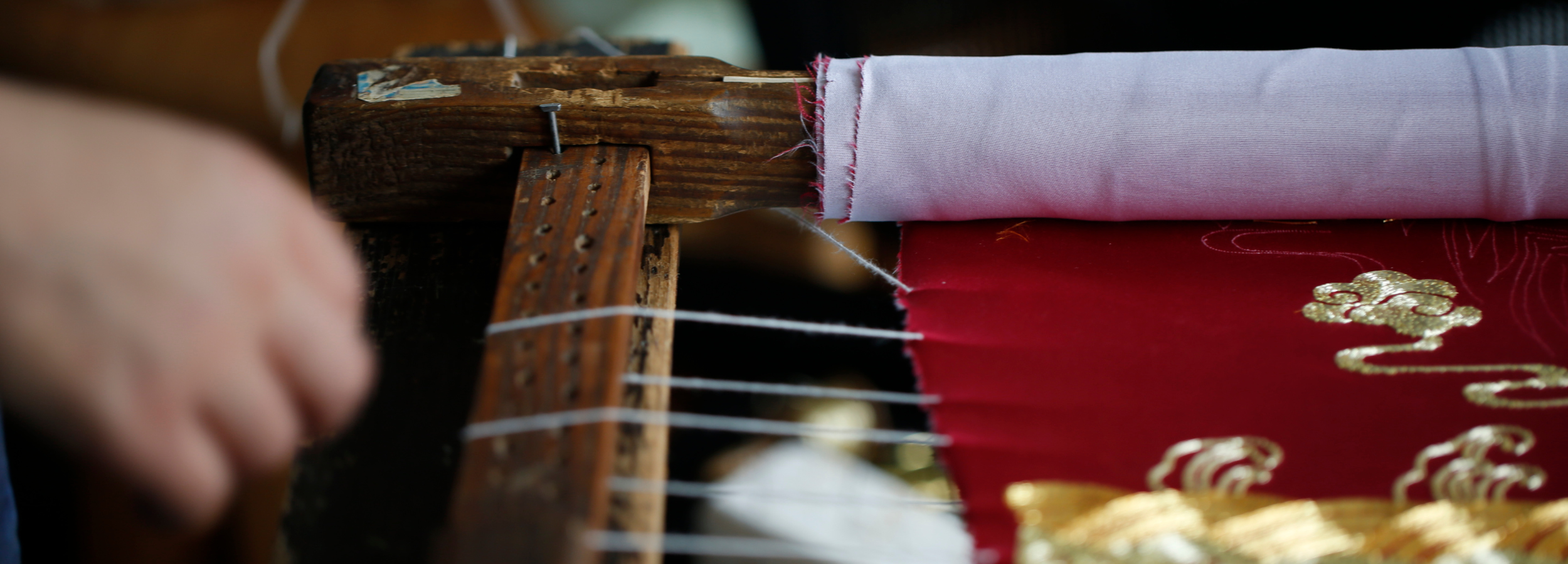the journey in 6 steps
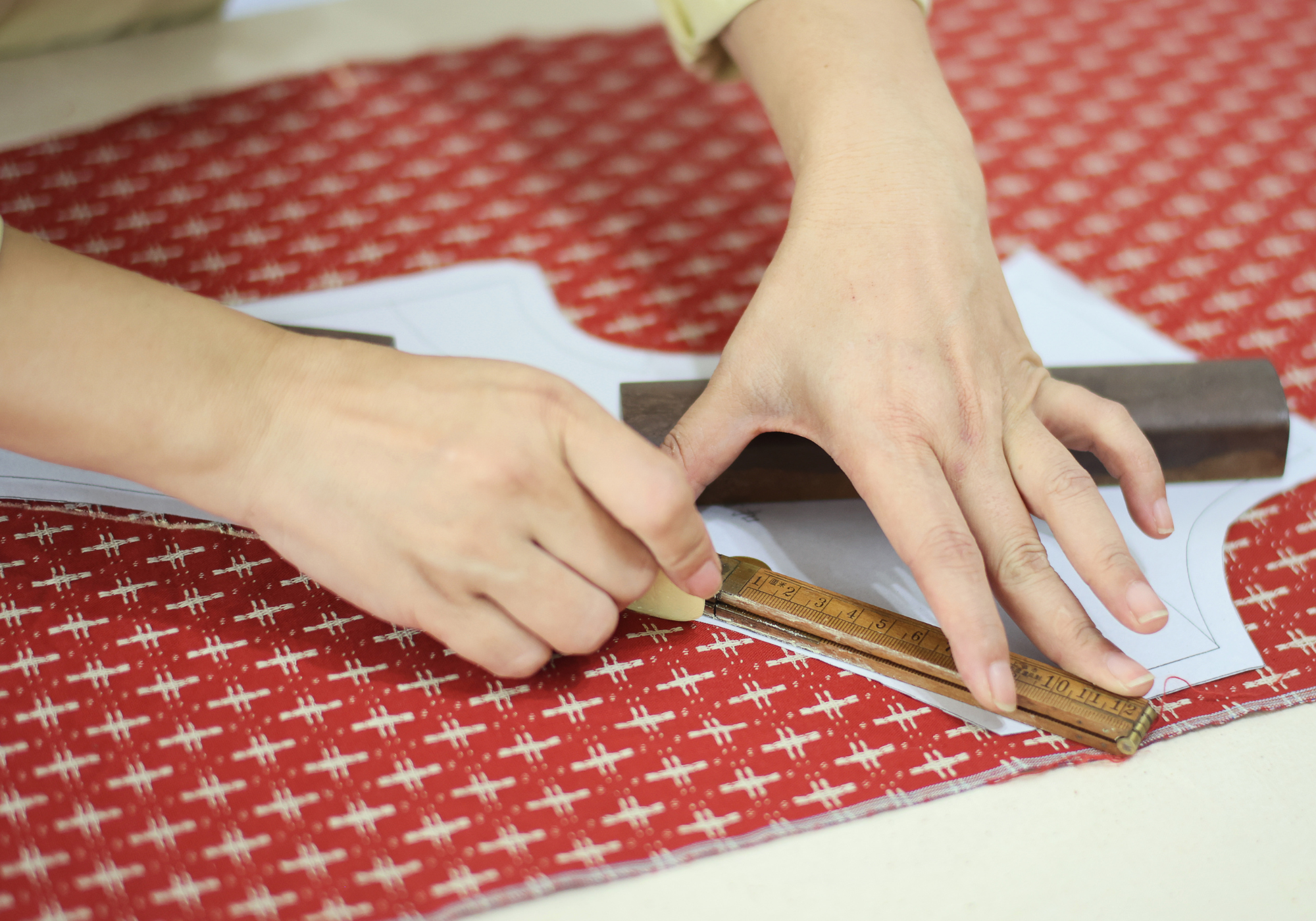
Pattern Drafting: Made for you
Each Qipao begins with a new pattern drafted to your measurements.
We do not adjust standard templates. Every line is drawn from observation of the wearer’s posture, shoulder, and movement.
This process defines proportion, balance, and comfort before a single piece of fabric is cut.
True couture fit begins on paper, not from an off-the-rack size.
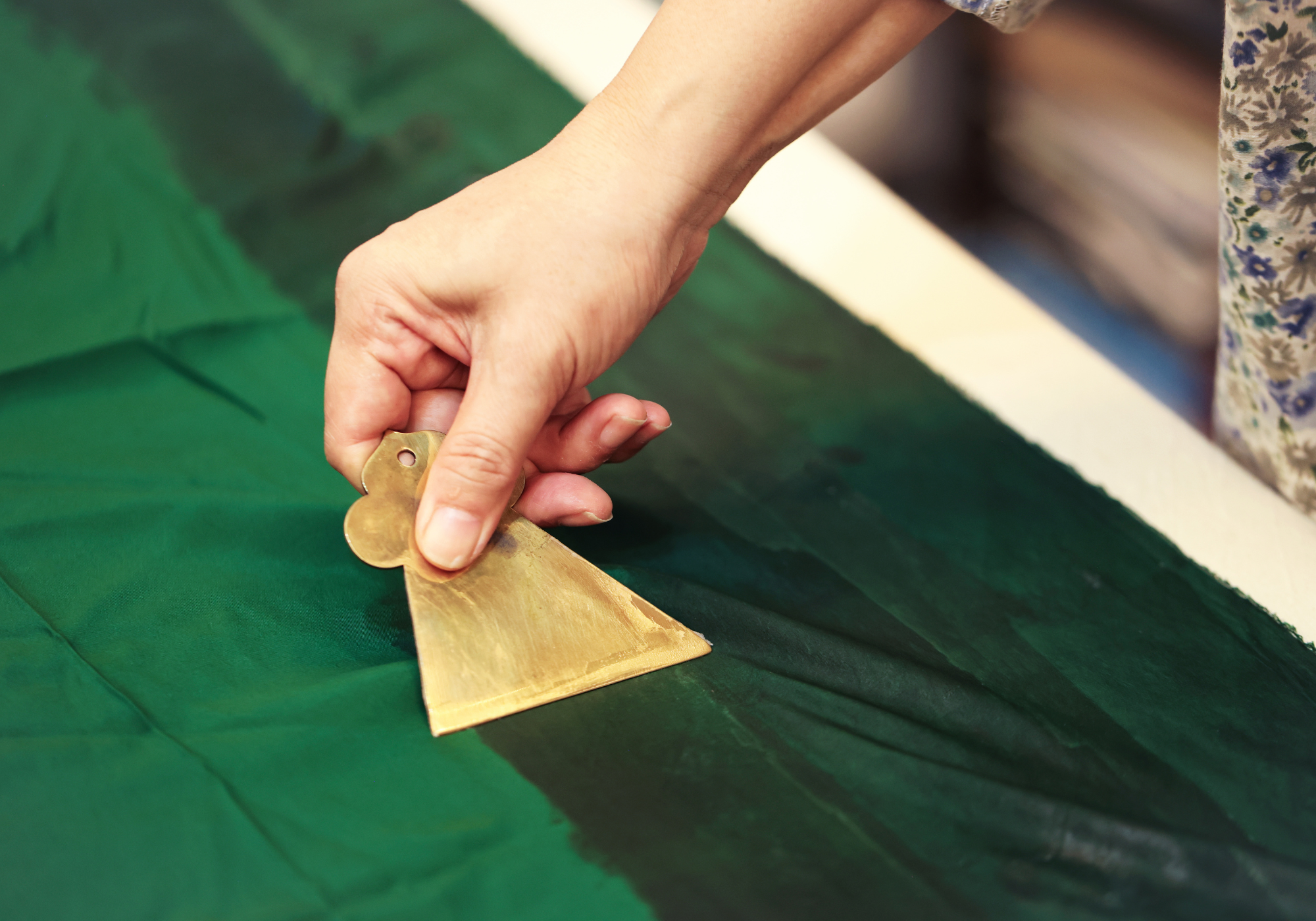
Hand-Cutting & Fabric Sizing
Once the pattern is finalised, the silk is prepared and cut by hand.
Because silk is soft and fluid, a thin layer of hand-applied sizing is brushed onto the lining side to stabilise the material.
This traditional preparation gives the fabric gentle structure, allowing it to hold shape during embroidery and construction.
Each panel is then cut by hand, following the natural grain of the silk to ensure smooth movement and an even drape.
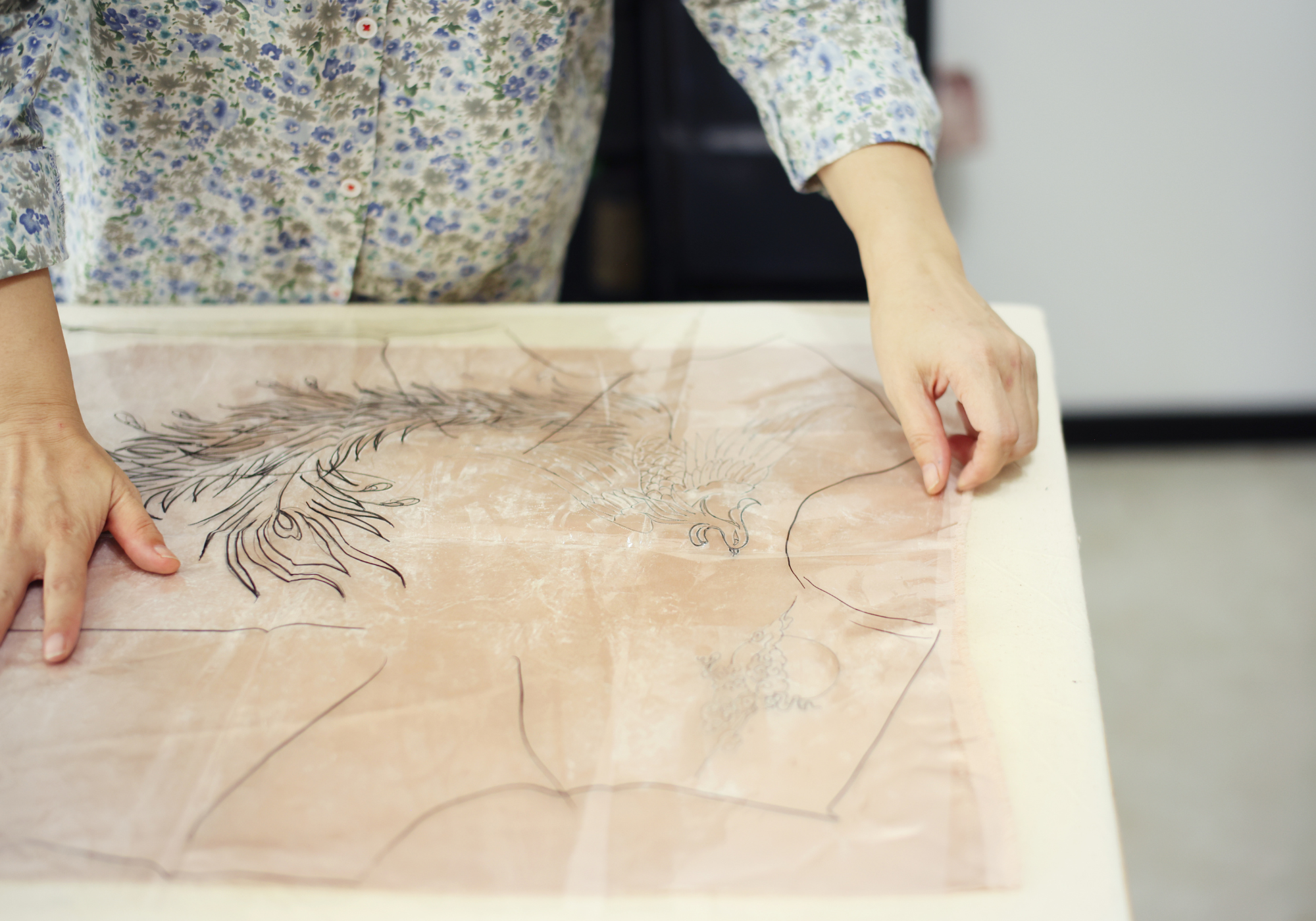
Embroidery Planning: Art that Moves with You
Before embroidery begins, each motif is carefully positioned on the pattern.
Every dragon’s tail, phoenix wing, or peony bloom is placed with the body’s movement in mind so the design flows naturally when worn.
Whether using Shu embroidery with its soft tonal shading or Panjin goldwork with its raised symbolic detail, each composition is planned to complement the wearer’s posture and occasion.
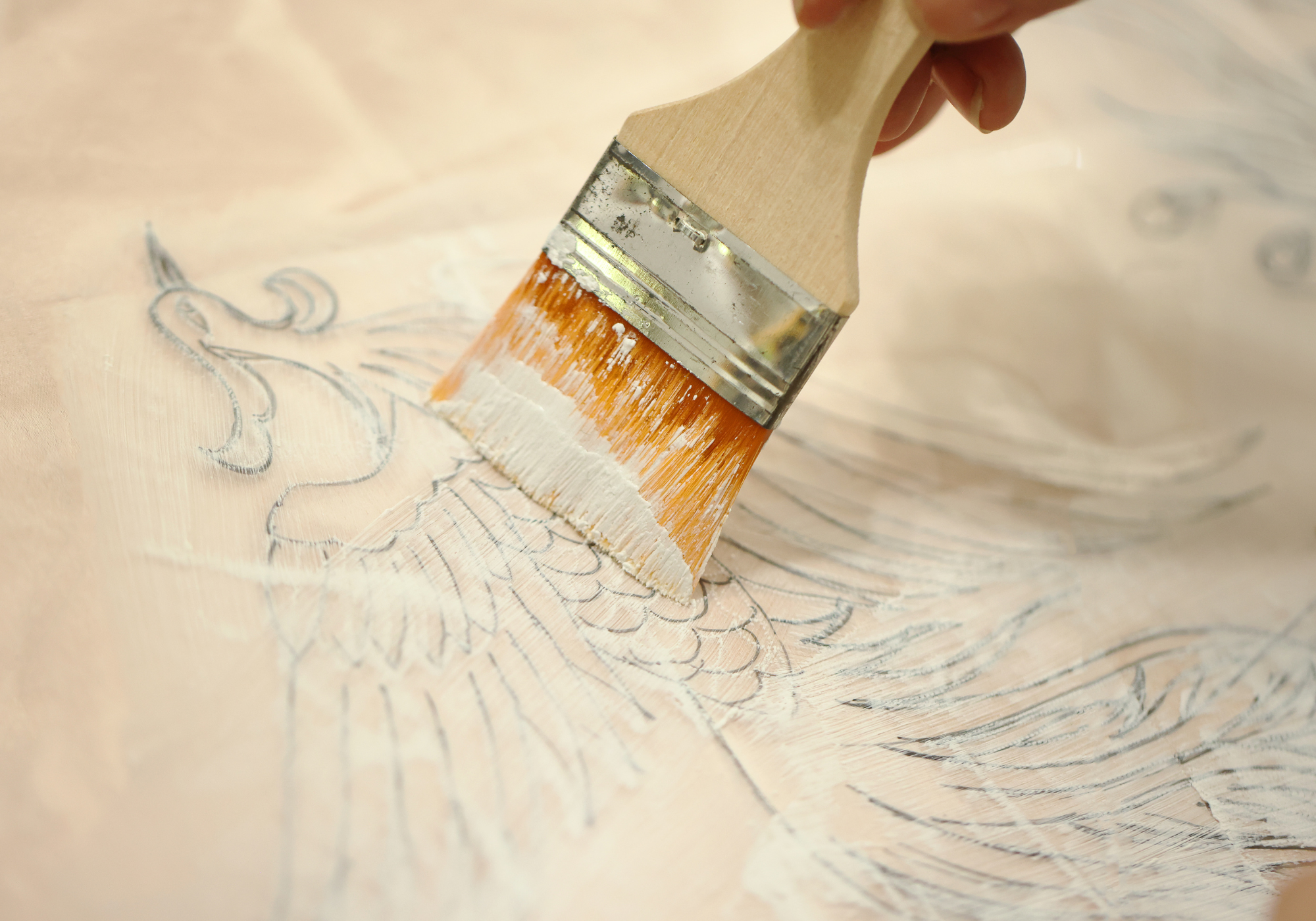
Transferring the Embroidery Design
Once the embroidery layout is approved, the motifs are transferred onto silk by hand, one section at a time.
Traditional tracing tools, chalk, or fine heat-transfer outlines are used to map each phoenix wing, koi tail, or peony petal in alignment with the body’s natural movement.
This stage requires steadiness and precision. Every line must be accurate, as the design cannot be corrected once marked.
It is the moment when the artwork leaves paper and becomes part of the garment’s form.
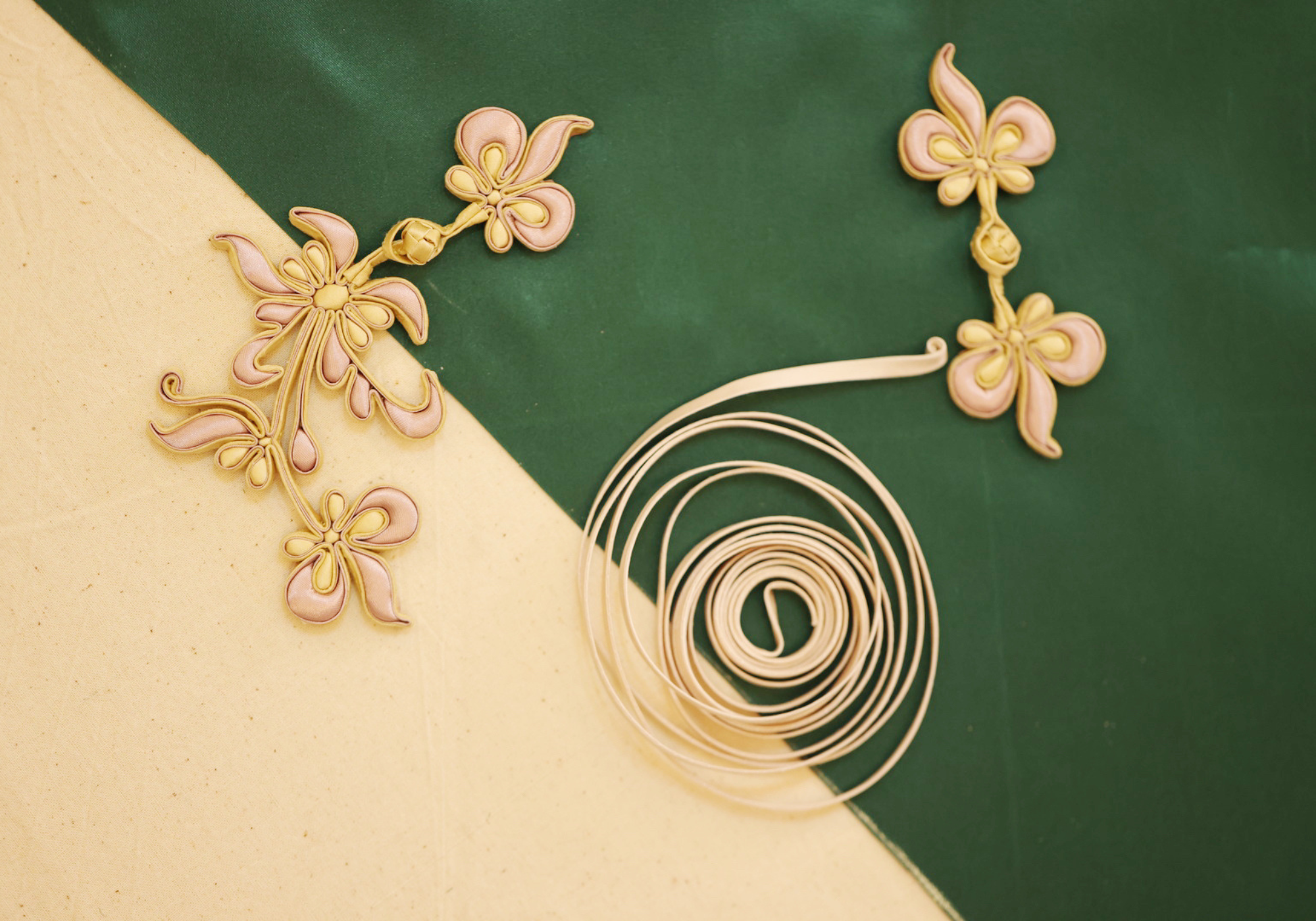
Traditional Qipao Construction
A JINZA Qipao is assembled using time-honoured couture techniques that cannot be replicated by machine.
The collar, or Li Ling, is padded and sculpted to hold its shape rather than simply folded.
Each Pankou knot is handmade and placed by hand to align with the design.
Side seams are curved to follow the body, with slits finished by hand for balance and movement.
Closures are concealed within plackets or hidden zippers to preserve a clean, uninterrupted line.

Finishing touches & final fitting
The final stage is quiet but essential.
The neckline is refined to rest smoothly against the collarbone. Hems are finished by hand, slits reinforced, and each dress is lined with silk bias for strength and comfort.
Personal details such as initials, a wedding date, or a family symbol may be embroidered within the lining as a private signature.
These extra procedures are how your Qipao becomes a memory you can wear.
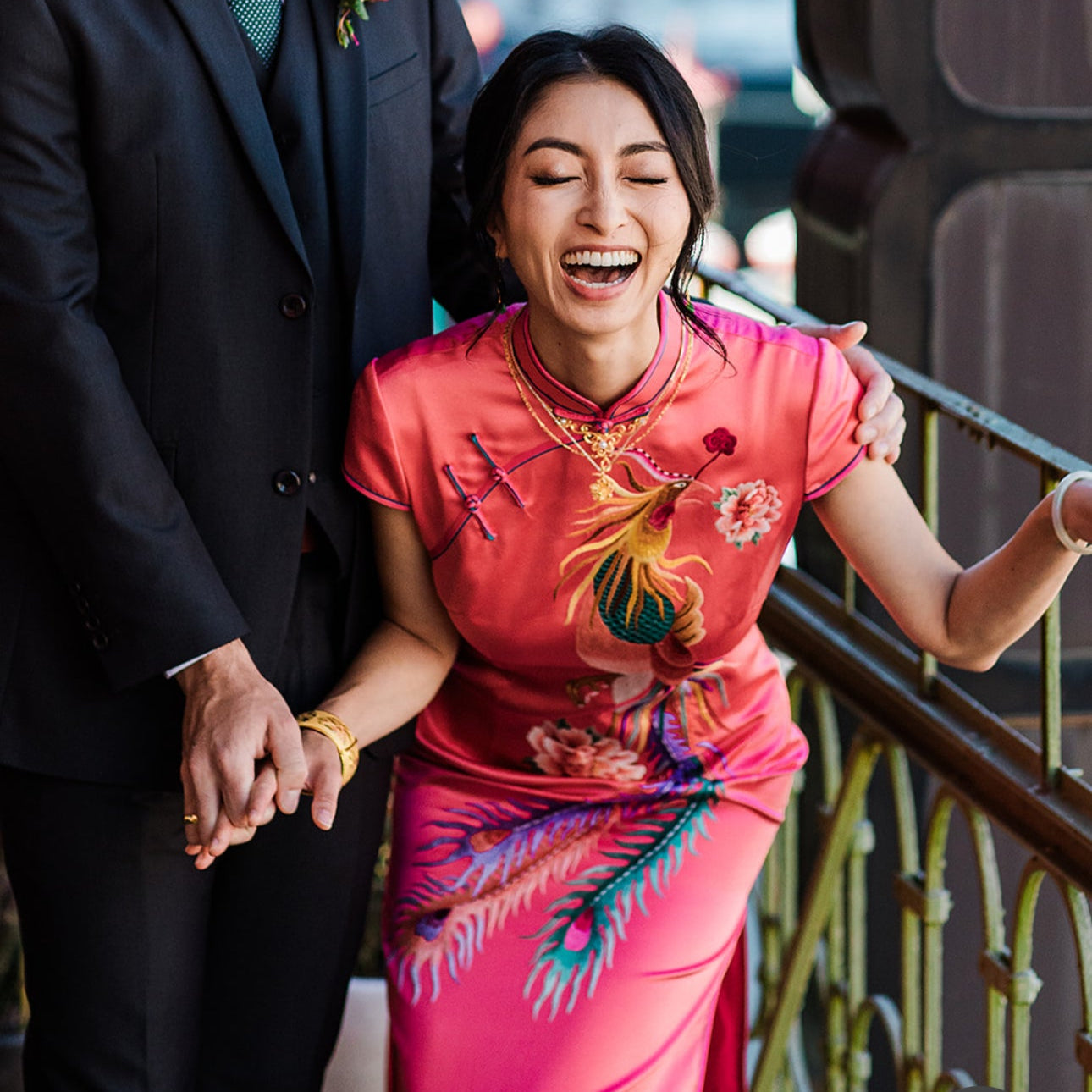
A completed bridal Qipao on a client

Hand-embroidered family names on the cuff. The same care goes into our men's Tang suits. Matching embroidery, colors, and motifs create harmony between the couple's attire.

Hand embroidery in progress
Learn more about the work behind each piece, including pricing and timelines.
